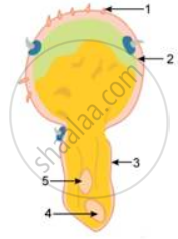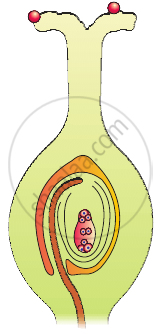Advertisements
Advertisements
Question
Write a short note on Heterostyly.
Solution
Heterostyly: Some plants produce two or three different forms of flowers that are different in their length of stamens and style. Pollination will take place only between organs of the same length.
E.g: Primula.
RELATED QUESTIONS
Double fertilization is reported in plants of both, castor and groundnut. However, the mature seeds of groundnut are non-albuminous and castor are albuminous. Explain the post fertilization events that are responsible for it.
Describe any two devices in a flowering plant which prevent both autogamy and geitonogamy.
Give one word/term for the following:
When pollen grains of a flower reach the stigma of the same flower.
What happens to the following after fertilization?
Calyx
What are the advantages of the following in the flower to the plant concerned?
Smooth and light pollen
Given ahead is a diagrammatic sketch of the sectional view of a germinating pollen grain. Study the same and then answer the question that follows:

Where does the germination of the pollen grain take place and how?
What is ‘double fertilization’? Describe it with the help of a neat and well-labeled diagram. Give its importance.
Explain the pollination process in Salvia
After fertilization the ovule becomes ______.
Match the following
| I) | External fertilization | i) | pollen grain |
| II) | Androecium | ii) | anther wall |
|
III) |
Male gametophyte | iii) | algae |
| IV) | Primary parietal layer | iv) | stamens |
Assertion: Sporopollenin preserves pollen in fossil deposits
Reason: Sporopollenin is resistant to physical and biological decomposition
In majority of plants pollen is liberated at
Which of the following is the CORRECT sequence of events during double fertilization in Angiosperms?
Fusion of one of the male gametes with egg nucleus is referred to as ______.
All the events from pollen deposition on the stigma until pollen tubes enter the ovules are together referred to as ______.
In the diagram given below, show the path of a pollen tube from the pollen on the stigma into the embryo sac. Name the components of egg apparatus.

Can an unfertilised, apomictic embryo sac give rise to a diploid embryo? If yes, then how?
Which is the triploid tissue in a fertilised ovule? How is the triploid condition achieved?
What is the function of the two male gametes produced by each pollen grain in angiosperms?
Select the option that shows the correctly identified 'U', 'X', 'Y' and 'Z' in a developing dicot embryo.

